• Alpha raysare particulate and composed of two protons and two neutrons emitted from uranium atoms and other elements generated in reactors, such as plutonium, americium, curium, and einsteinium. Alpha particles travel a very short distance in the human body. They cannot penetrate the layers of dead skin in the epidermis to damage living skin cells. But when these radioactive elements enter the lungs, liver, bones, or other organs, they transfer a large dose of radiation over a long period of time to a very small volume of cells. Although most of these cells are killed, some on the edge of the radiation field remain alive. They are often mutated, potentially causing cancer. Alpha emitters are among the most carcinogenic materials known.
• Beta rays,like alpha rays, are also particulate. A beta ray is a charged electron emitted from a radioactive element, such as strontium-90, cesium-137, and iodine-131. The beta particle is light in mass, travels farther than an alpha particle, and also is mutagenic.
• Neutron raysare released during the fission process in a reactor or a bomb. Reactor 1 at Fukushima has been periodically emitting neutron radiation as sections of the molten core become intermittently critical. Neutrons are large radioactive particles that travel many kilometers. They pass through everything, including concrete and steel. There is no way to hide from them, and they are extremely mutagenic.
There are over two hundred radioactive elements, each with its own half-life, biological characteristics, and pathways in the food chain and the human body. Amazingly, most have never had their biological pathways examined. They are invisible, tasteless, and odorless. When cancer manifests, it is impossible to determine precisely its etiology or cause, but there is a large literature proving that radiation causes cancer, including the data from Hiroshima and Nagasaki.
Here are descriptions of just five of the radioactive elements that are continually being released into the air and water at Fukushima:
• Tritiumis radioactive hydrogen 3H. There is no way of separating tritium from contaminated water as it combines with oxygen to form HTO. The only known material that can prevent the escape of tritium is gold, because it is so dense, so all reactors continuously emit large quantities of tritium into the air and cooling water as they operate. Tritium concentrates in aquatic organisms including algae, seaweed, crustaceans, and fish, and also in terrestrial food. Like all radioactive elements, it is tasteless, odorless, and invisible, and will therefore inevitably be inhaled or ingested through food. It passes unhindered through the skin and lungs if a person is immersed in fog containing tritiated water near a reactor. It can cause brain tumors, birth deformities, and cancer in many organs. Tritium has a half-life of 12.3 years—meaning that in 12.3 years, one-half of its radioactive energy will have decayed—so it remains radioactive for over one hundred years.
• Cesium-137is a beta and high-energy gamma emitter with a half-life of thirty years. Cesium is detectable as a radioactive hazard for over three hundred years. Like all radioactive elements, cesium bio-concentrates at each level of the food chain (note: the human body stands atop the food chain). As an analogue of potassium, it becomes ubiquitous in all cells. Exposure to cesium can induce brain cancer, rhabdomyosarcoma (very malignant muscle tumors), ovarian or testicular cancer, and genetic disease.
• Strontium-90is a high-energy beta emitter with a half-life of twenty-eight years. As a calcium analogue, it is a bone seeker. It concentrates in the food chain, specifically milk (including breast milk), and is laid down in bones and teeth in the human body. Exposure to strontium-90 can lead to carcinomas of the breast and bone and to leukemia.
• Radioactive iodine-131is a beta and gamma emitter with a half-life of eight days. It remains hazardous for ten weeks. It bioconcentrates in the food chain: first in vegetables and milk, then the human thyroid gland, where it is a potent carcinogen inducing thyroid disease and/or thyroid cancer. It is important to note that of 295,211 children under the age of eighteen who have been examined by thyroid ultrasound in the Fukushima Prefecture, eighty-nine have been diagnosed with thyroid cancer and forty-two more are suspected to have the disease. [5] Fukushima Health Management, Proceedings of the 15th Prefectural Oversight Committee Meeting for Fukushima Health Management Survey , Fukushima, Japan, 2014.
In Chornobyl, thyroid cancers were not diagnosed until four years after the accident. This early manifestation at Fukushima indicates that the Japanese children almost certainly received a high dose of radioactive iodine, and along with iodine, high doses of many other isotopes. Obviously, the exposed population will have been similarly contaminated so the rate of other types of cancer is almost certain to rise.
•Plutonium,one of the most deadly elements, is an alpha emitter. It is highly toxic, and one millionth of a gram will induce cancer if inhaled into the lungs. As an iron analogue, it combines with the iron-transferring protein transferrin, and it causes liver cancer, bone cancer, leukemia, and multiple myeloma. Plutonium concentrates in the testicles and ovaries, where it can induce testicular or ovarian cancer and genetic diseases in future generations. It is also teratogenic, killing cells in a developing fetus to cause severe congenital abnormalities. As a result of plutonium exposure from Chornobyl, there are medical homes full of children with deformities never before seen in the history of medicine. The half-life of plutonium is 24,400 years, and thus it is radioactive for approximately 250,000 years. Plutonium is also fuel for atomic bombs. Five kilograms is enough fuel for a weapon that would vaporize a city. Each reactor makes 250 kilograms of plutonium a year. It is postulated that less than one kilogram of plutonium, if adequately distributed, could induce lung cancer in every person on earth.
The radioactive contamination and fallout from nuclear power plant accidents will have serious long-term medical ramifications because the released radioactive elements will continue to concentrate in food for hundreds to thousands of years, inducing epidemics of cancer, leukemia, and genetic disease. Already we are seeing such pathology and abnormalities in birds and insects. Because they reproduce very fast, it is possible to observe disease caused by radiation over many generations within a relatively short space of time. Pioneering research has demonstrated high rates of tumors, cataracts, genetic mutations, sterility, and reduced brain size among birds in the exclusion zones of both Chornobyl and Fukushima. What happens to animals will happen to human beings. [6] A.P. Møller and T.A. Mousseau, “The Effects of Low-Dose Radiation: Soviet Science, the Nuclear Industry—and Independence?,” Significance 10, no. 1 (2013): 14–19.
The Japanese government is desperately trying to clean up the radioactive contamination from Fukushima Daiichi. But in reality, all that can be done is to collect it, place it in containers—usually plastic bags—and transfer it to another location. Some contractors have allowed their workers to empty radioactive debris, soil, and leaves into streams and other illegal places. We do not know how to neutralize these elements nor how to prevent them from spreading in the future. The main question becomes where to store the contaminated material safely away from the environment for thousands of years. No container remains effective for longer than one hundred years. Sooner or later, they will leak long-lived radioactive elements. There is no safe place in Japan to store this amount of radioactive soil and water, let alone the thousands of tons of accumulated high-level radioactive waste at the fifty-four nuclear reactors in Japan.
Читать дальше
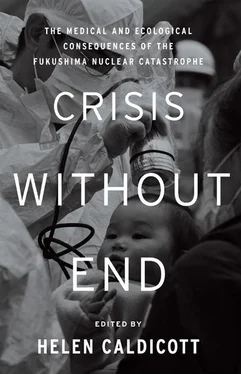

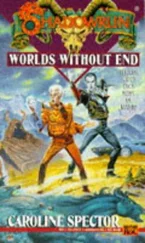
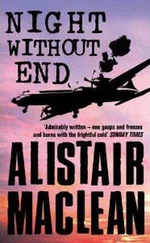
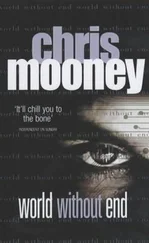

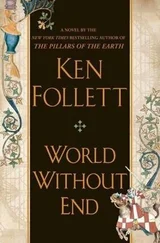


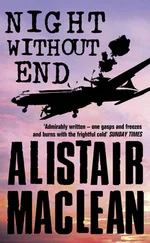


![Helen Rowland - The Widow [To Say Nothing of the Man]](/books/752764/helen-rowland-the-widow-to-say-nothing-of-the-man-thumb.webp)